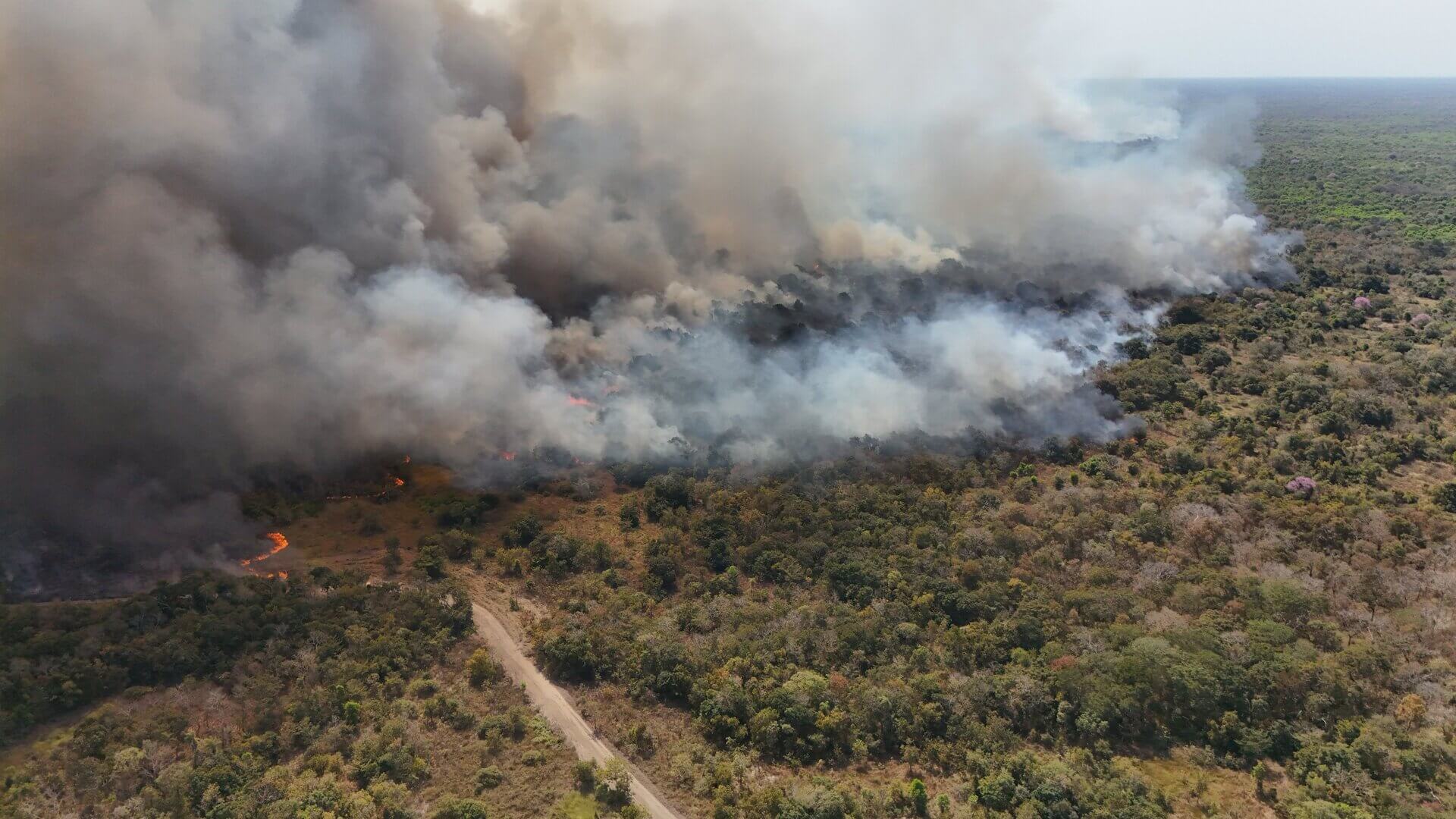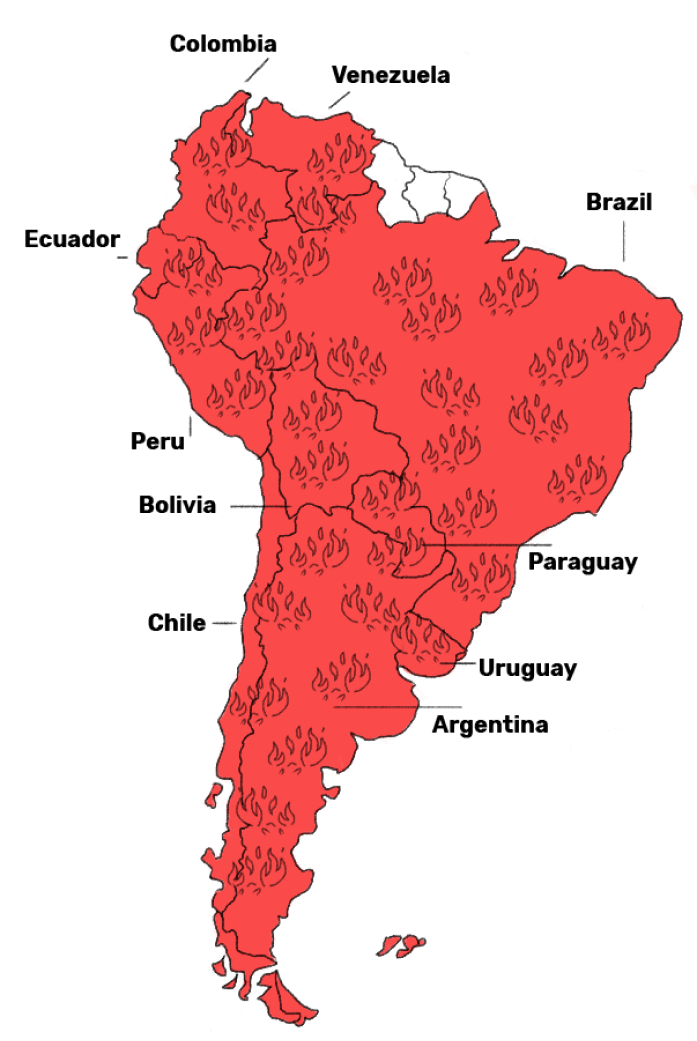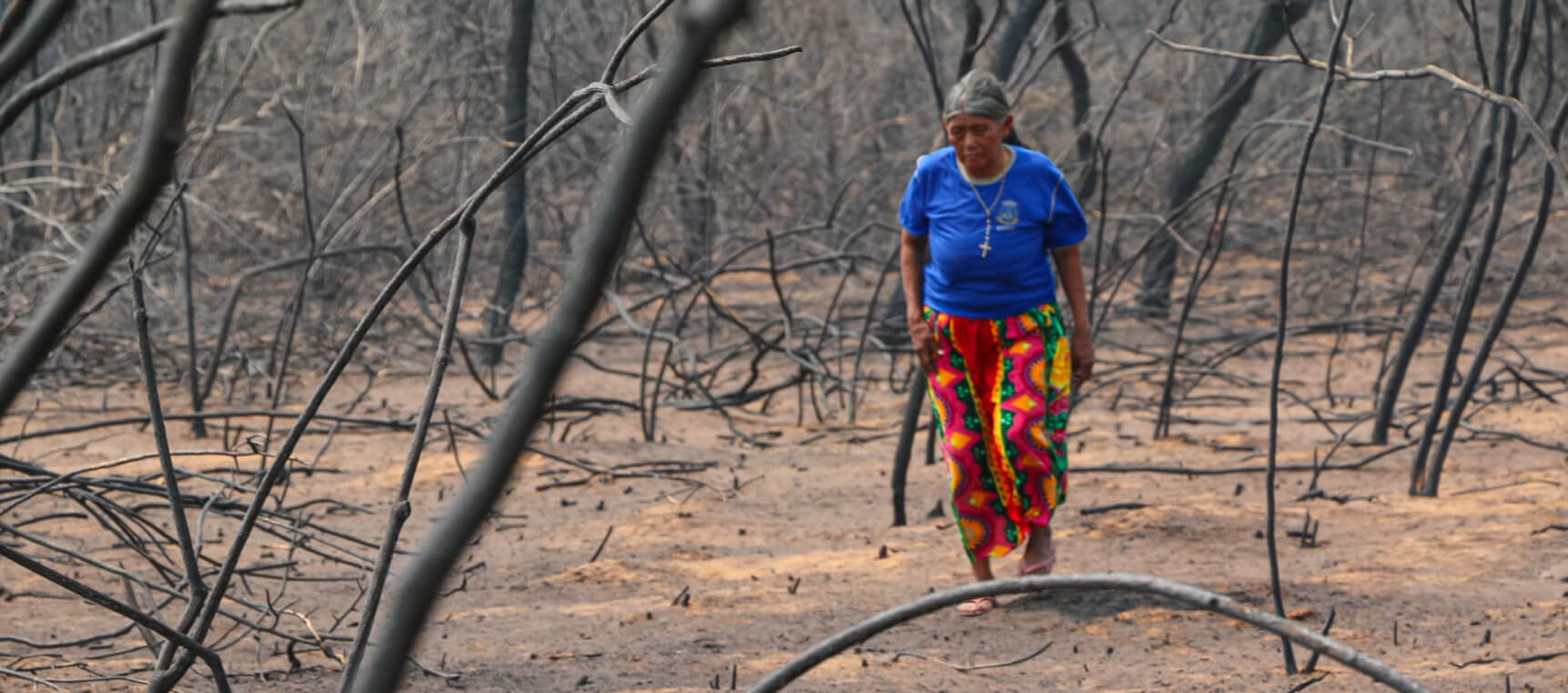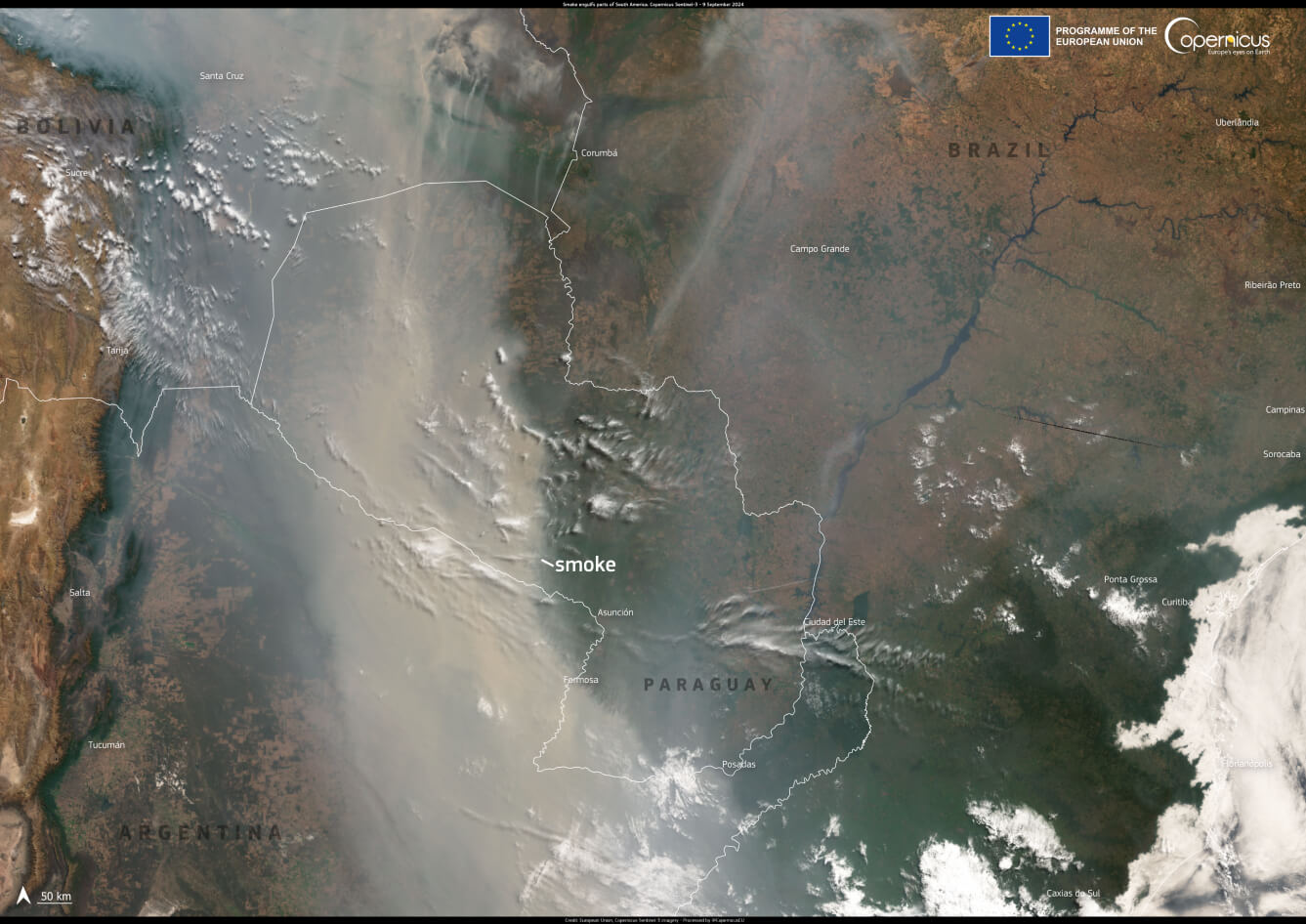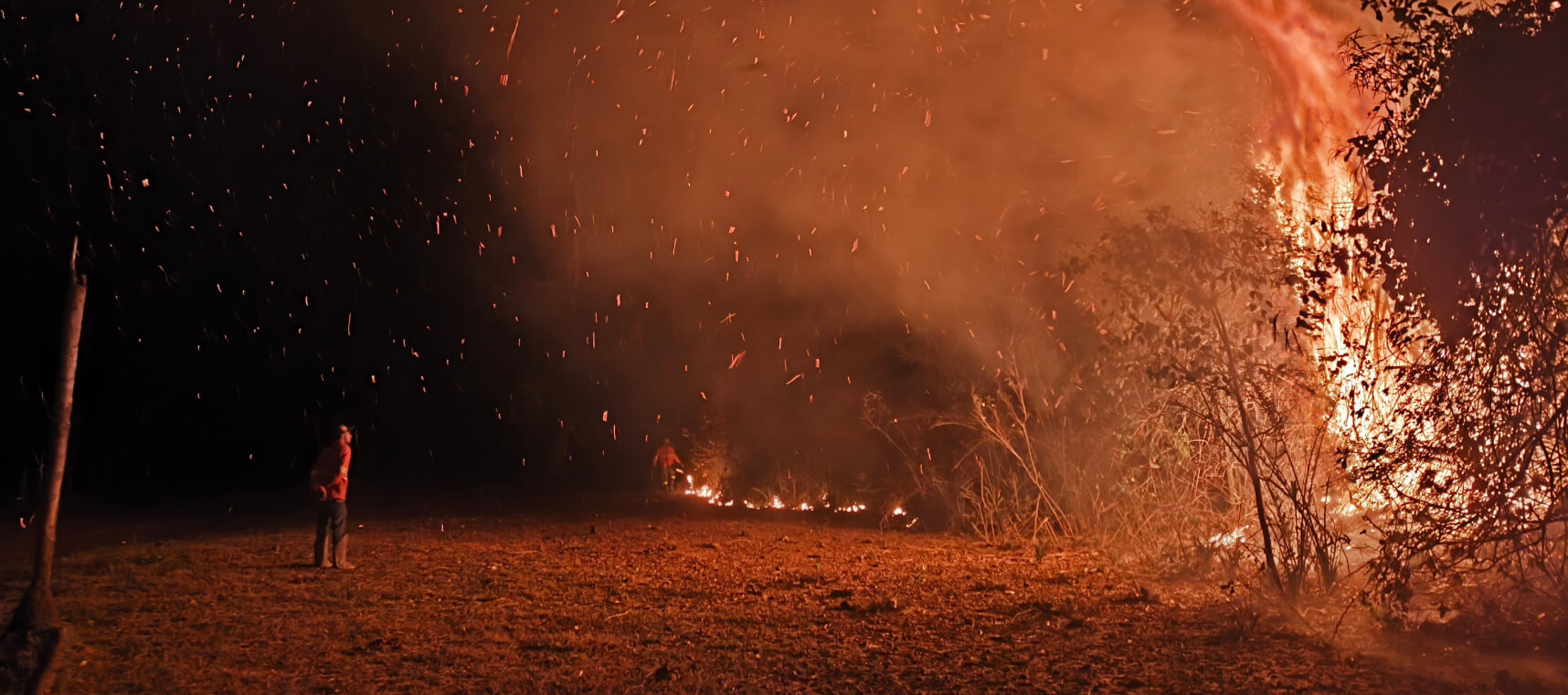Wildfires are ravaging the Amazon, Gran Chaco, Brazilian Cerrado and other vital ecosystems for the world including the world’s largest wetland, the Pantanal. Thai season’s wildfires coincide with the deepest historic drought in 121 years, leading to CO2 emissions reaching alarming levels and altering regional rainfall patterns.
The extreme drought in the Brazilian Amazon has severely impacted communities and ecosystems. More than 300,000 homes, schools and health units suffer the lack of water and food, while Indigenous territories face extreme vulnerability to climate change.


